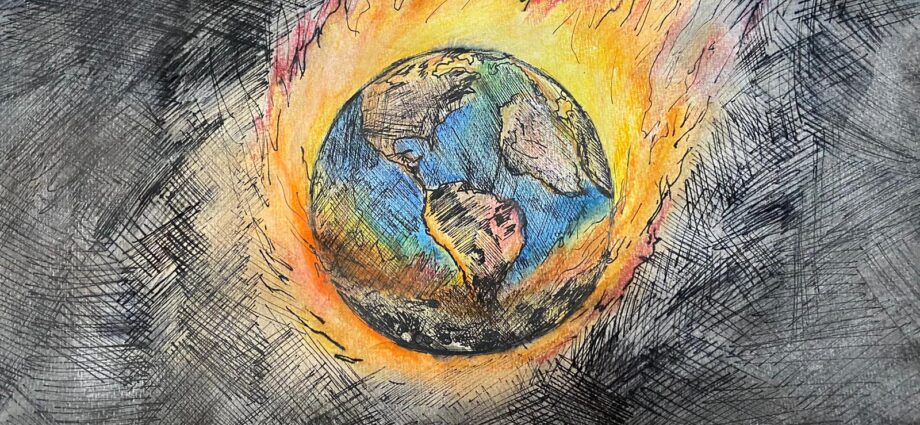Written by Margaux Marzuoli
What is the problem?
Our planet is warming up because of the effects of greenhouse gasses. These gasses trap heat from the sun – like a greenhouse – and progressively heat up the planet. This is a problem because humans, along with many other species, cannot live on a warmer Earth. Below is a figure from the International Panel of Climate Change (IPCC) on the observed impacts of climate change on different ecosystems and the implication for humans in the world. These are to become more severe as the Earth continues to heat up.
In its Sixth Assessment Report, the IPCC also establishes the “indisputable … role of human influence on the climate system”. In doing so, the report outlines how different sectors of human activity emit different amounts of greenhouse gasses, as seen in the pie chart below.
However, it is important to highlight the contribution of carbon dioxide (CO2) to this pie chart. CO2 poses the greatest threat to our planet because it is the most abundant gas in our atmosphere. Therefore, reducing greenhouse gas emissions requires a drastic reduction in our emission of CO2 .
Industrial processes and the combustion of fossil fuels have caused a surge in CO2 emissions since 1950. Every year since the 1850s, the combustion of coal, oil and natural gas have emitted the most CO2. Land-use change, largely associated with deforestation, has also contributed to the increase in CO2 emissions. All in all, scientists have now made it clear that our resource consumption goes hand in hand with the warming up of the planet.
Who is to blame?
But, if we are to attempt to resolve this problem, we need to know who is responsible for these emissions. Accumulating each countries’ emissions from 1850 to 2019, developed countries are responsible for 45% of greenhouse gas emissions. However, nowadays their emissions have significantly dropped and East Asia is responsible for the highest quantity of greenhouse gas emissions (27%).
Looking at emissions per inhabitant displays yet another reality. The region of North America has the tallest bar on the chart, emitting a lot of greenhouse gasses for a relatively low amount of people. This analysis also reveals that South Asia and Europe share similar figures in the sense that South Asia has a lot of people and little emissions, and Europe has less people and produces a lot of emissions.
Lastly, in applying the notion of carbon footprint (where CO2 emissions are attributed to the country in which the product is consumed, instead of where it is produced) data points to a drop in the CO2 emissions in East Asia, Northern Asia and Eastern Europe and a rise in North America, Europe and other developed countries.
Is the Global North to blame for its consumerism? Yes. Is recent development in the Global South to blame? As well. In the end, the blame is on all of us for needing (and wanting) energy.
What is the solution?
If the issue is that we are too dependent on energy, then the solution lies in creating energy or learning to live with less. Whatever we choose to do, we must first and foremost discuss how to power the next 30 years. Whether it is to achieve net carbon emissions by 2050 or to set ourselves on a more sustainable trajectory for humankind as we re-organize our economy, we need to discuss how we are going to move away from fossil fuel combustion as a source of energy.
Edited by Karolina Hajna, artwork by Maria Alexeeva


